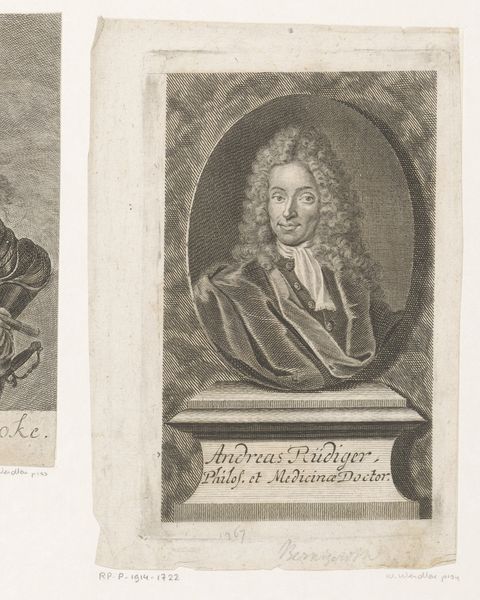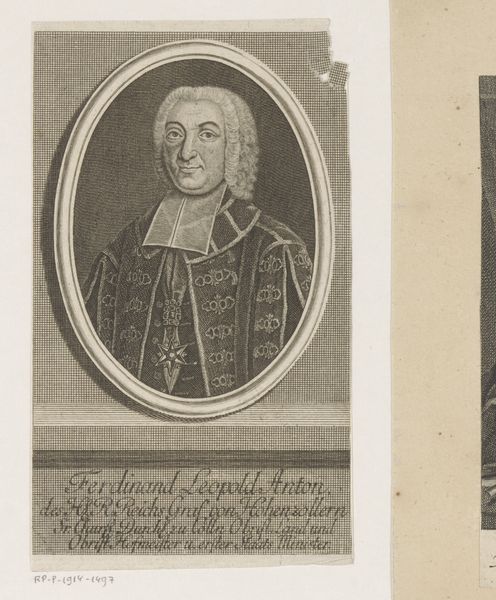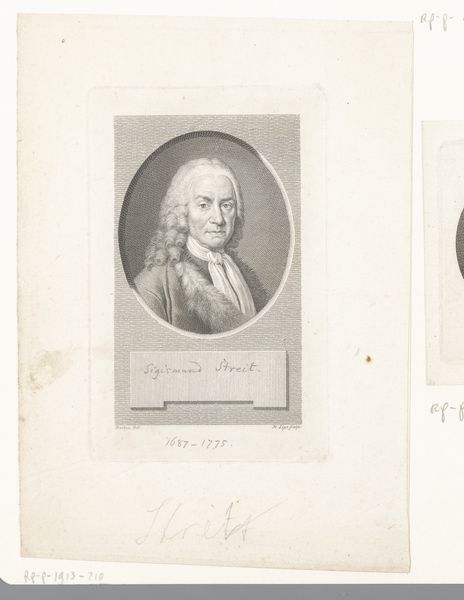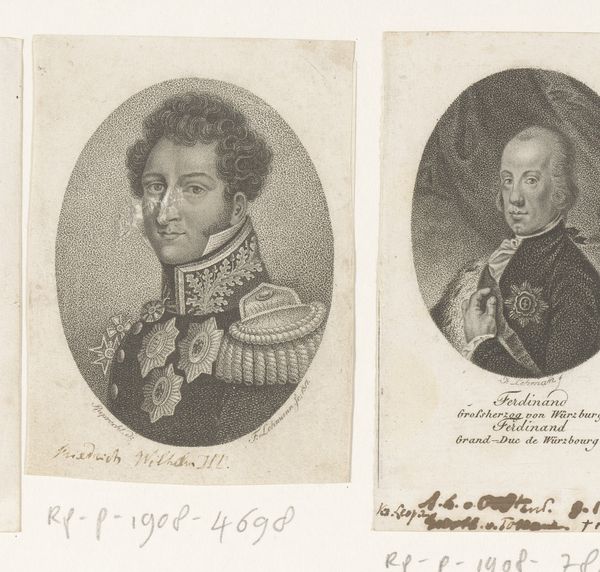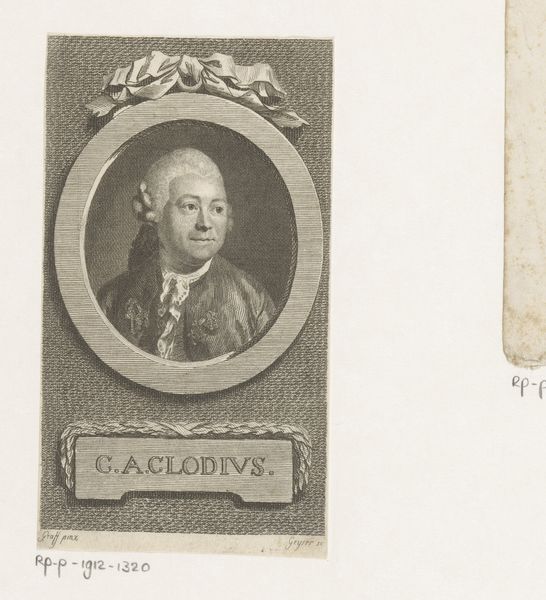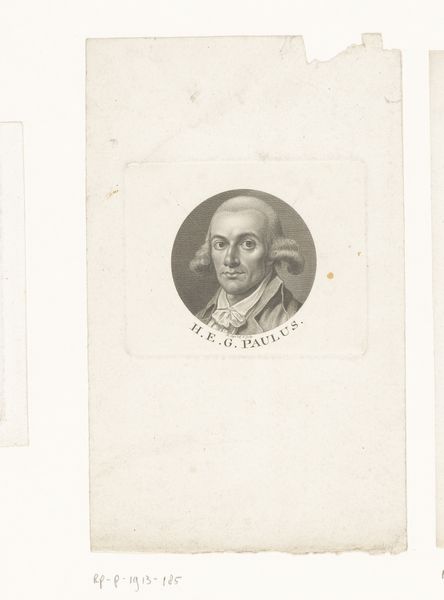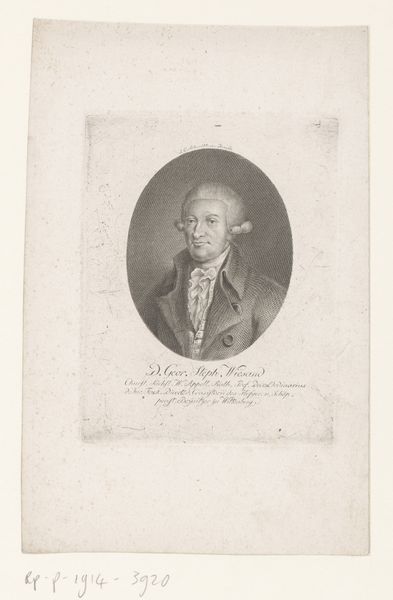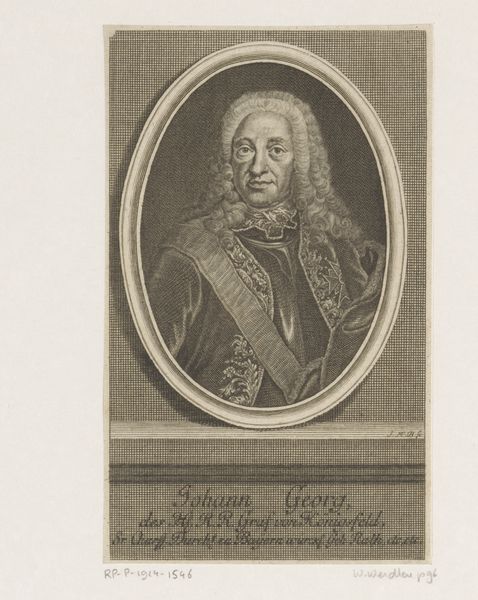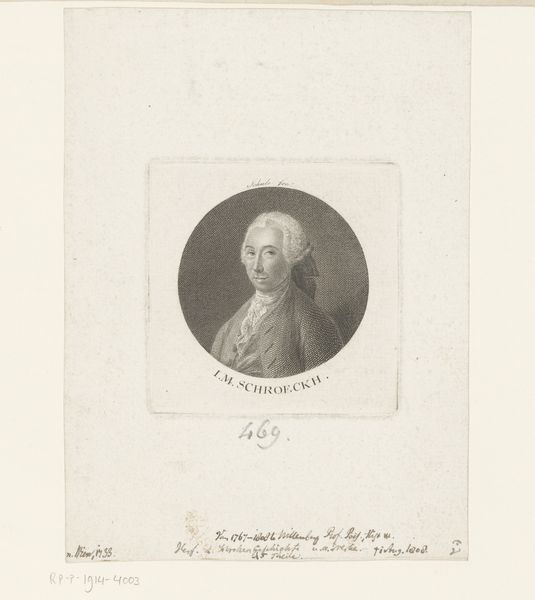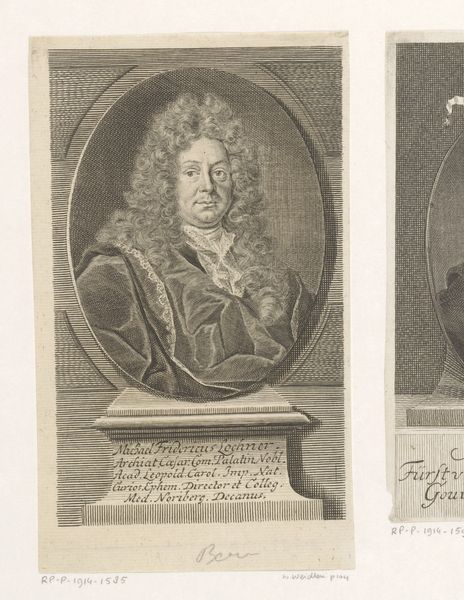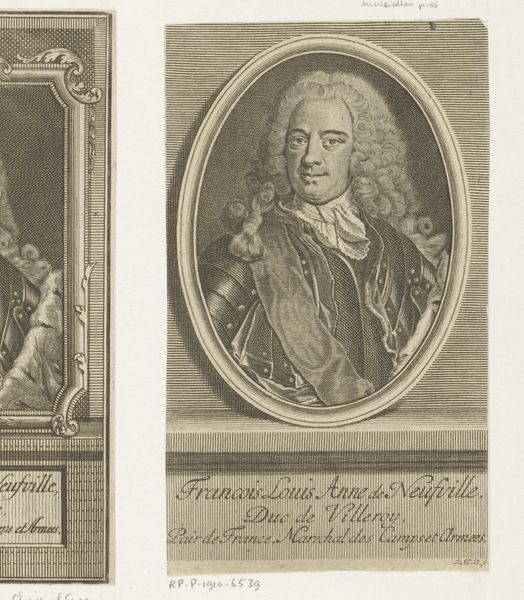
print, engraving
#
portrait
#
neoclacissism
# print
#
history-painting
#
engraving
Dimensions: height 96 mm, width 57 mm
Copyright: Rijks Museum: Open Domain
Curator: Here we have a fascinating engraved print, "Portret van Carl, Grossherzog von Frankfurt," created between 1797 and 1886 by Friedrich Leonhard Lehmann. It resides here in the Rijksmuseum. Editor: My initial reaction is that this is quite formal and a bit cold. The precise engraving and oval composition seem intended to project authority. It lacks warmth, almost feeling like propaganda. Curator: Precisely! The work adheres to neoclassical principles. Observe the smooth, idealized features, the meticulously rendered clothing, and the symbolic medal. Lehmann prioritized clarity and order to express status and intellect, typical of neoclassical portraiture, where form supersedes immediate emotional expression. Editor: But what status are we truly seeing here? Grand Duke Carl presided over Frankfurt during a tumultuous period, heavily influenced and ultimately annexed by Napoleonic France. His finery serves as a mask concealing the unstable political landscape he inhabited. We need to examine whose interests were served by projecting this image of regal composure. Curator: That contextual lens is indeed crucial. However, analyzing the print itself, notice the technical skill required to achieve such detailed tonal variations using only engraving. The artist successfully created volume and depth within a limited palette, emphasizing a polished, controlled aesthetic. The line work itself carries significance, guiding the eye and establishing hierarchy. Editor: But controlled for what purpose? This “controlled aesthetic” supported the political narrative. By meticulously crafting Carl’s portrait, Lehmann subtly reinforced ideas of legitimate power during an era of revolutionary upheaval. Art served as an instrument. The portrait naturalizes aristocratic privilege in a world of impending democratic reforms. Curator: A valuable insight. Thinking purely in terms of composition, the oval frame imposes a sense of containment on the subject, perhaps intentionally. Editor: Which further contains and sanitizes his legacy, wouldn't you say? Art reflects and refracts historical power struggles, sometimes celebrating them and sometimes questioning them. Here, it seems mostly the former. Curator: Perhaps so. Though even through a critical lens, appreciating the formal elegance of the engraving and how its Neoclassical traits served its own period adds dimensions that give rise to thoughtful appreciation. Editor: And that is exactly why this piece deserves our collective attention, by combining careful observations with broader understanding. Thank you for exploring those observations.
Comments
No comments
Be the first to comment and join the conversation on the ultimate creative platform.
